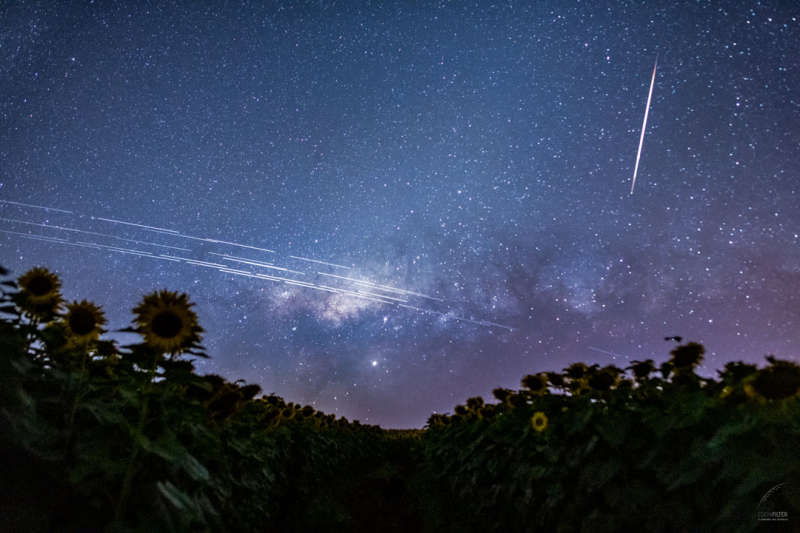
|
Credit & Copyright: Egon Filter
Explanation:
What are those streaks over the horizon?
New
Starlink satellites reflecting sunlight.
SpaceX
launched 60 Starlink communication satellites in May and
60 more in November.
These satellites and
thousands
more are planned by
communications companies in the next few years that may make
streaks like these relatively common.
Concern has been voiced by many in the astronomical community about how reflections
from these
satellites may affect future observations into space.
In the pictured composite of 33 exposures,
parallel streaks from Starlink satellites are visible over southern
Brazil.
Sunflowers dot the foreground, while a
bright meteor
was caught by chance on the upper right.
Satellite reflections are
not new -- the constellation of 66 first-generation
Iridium satellites launched starting 20 years ago produced
some
flares so bright that they could
be seen during the day.
Most of these old Iridium satellites, however, have been
de-orbited over the past few years.
Infinite Loop:
Create an APOD Station in your classroom or Science Center.
|
January February March April May June July August September October November December |
| |||||||||||||||||||||||||||||||||||||||||||||||||||||||
NASA Web Site Statements, Warnings, and Disclaimers
NASA Official: Jay Norris. Specific rights apply.
A service of: LHEA at NASA / GSFC
& Michigan Tech. U.
Based on Astronomy Picture
Of the Day
Publications with keywords: satellite
Publications with words: satellite
See also:
